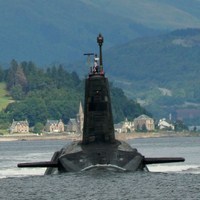As British troops withdraw from Afghanistan, the U.K. must make hard choices ahead of its forthcoming Strategic Defense and Security Review (SDSR), due for release in the months following the U.K.’s May 2015 general election. Yet efforts to realign Britain’s defense strategy as part of this process are likely to be constrained once again by financial considerations and the need to maintain continuity in certain areas. Overcoming these tensions will therefore require sound judgment in the coming months. Otherwise, Britain could be left with a strategically incoherent defense posture insufficient to meet the demands of the post-Afghanistan operating environment.
The transfer of command of U.K. military operations in Afghanistan’s Helmand province earlier this month to the U.S.-led Regional Command Southwest marked the latest phase in Britain’s redeployment of combat forces from the country—a process due to be completed by the end of 2014. Speaking a few months ago at Camp Bastion, the U.K.’s principal military base in Helmand, British Prime Minister David Cameron insisted that the troops could return home with their heads held high, in the knowledge that their mission was accomplished.
Nevertheless, Britain’s contribution to the mission in Afghanistan, namely helping the Afghan government develop its ability to prevent Afghanistan from again becoming a safe haven for international terrorists, has been costly. Since the U.K. first deployed troops to the country in 2001, 448 British service personnel have lost their lives there. By the end of 2014, it is expected that Britain will have spent roughly $42 billion on the campaign. These heavy human and financial costs have fueled skepticism among the British public about the benefits of embarking upon future military campaigns and have left their elected officials reluctant to take on new defense commitments—as was made apparent in August 2013, when parliament voted against military intervention in Syria.

